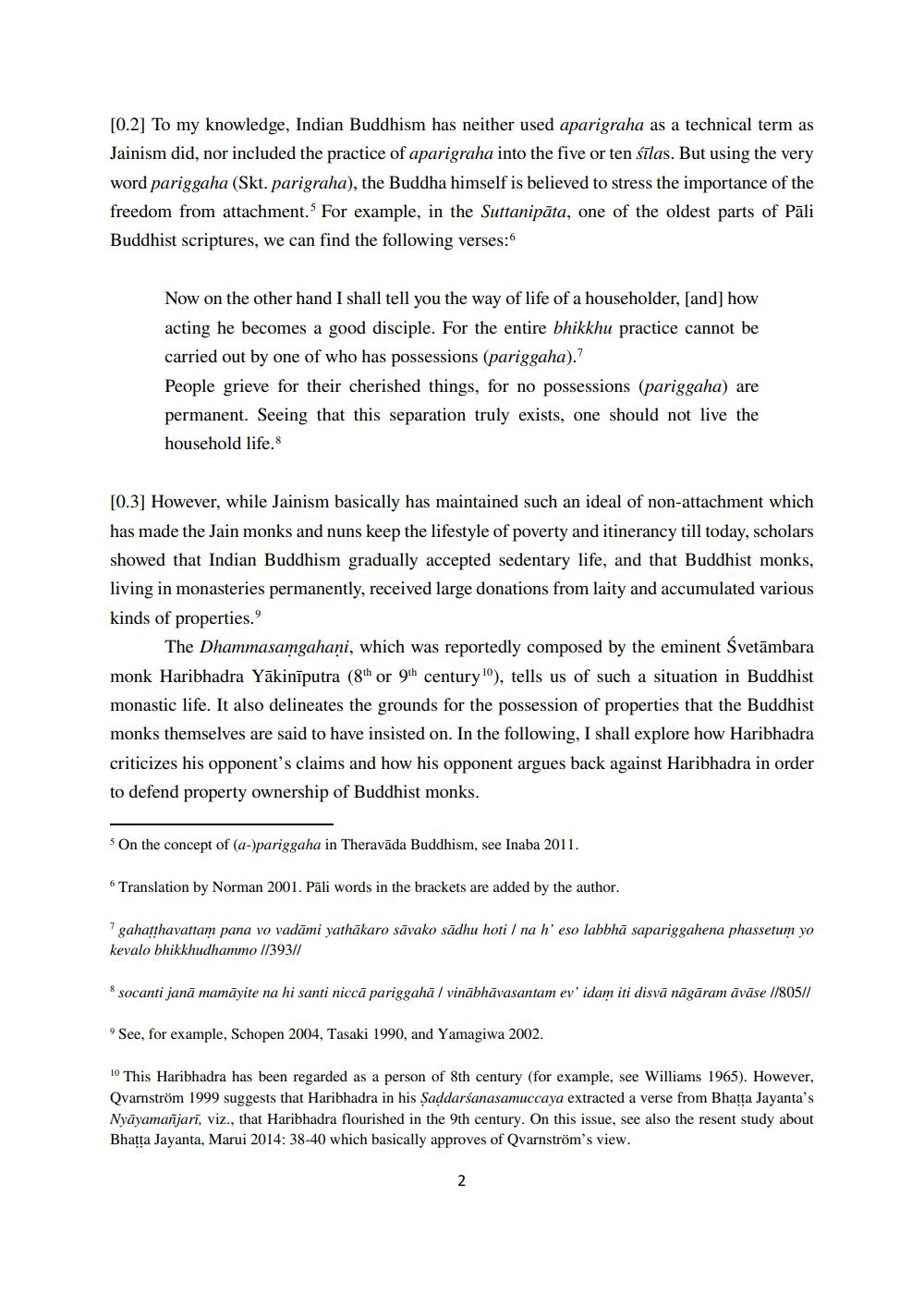Book Title: Haribhadra On Property Ownership Of Buddhist Monk Author(s): Yutaka Kawasaki Publisher: Yutaka Kawasaki View full book textPage 2
________________ [0.2] To my knowledge, Indian Buddhism has neither used aparigraha as a technical term as Jainism did, nor included the practice of aparigraha into the five or ten śīlas. But using the very word pariggaha (Skt. parigraha), the Buddha himself is believed to stress the importance of the freedom from attachment. For example, in the Suttanipāta, one of the oldest parts of Pāli Buddhist scriptures, we can find the following verses: Now on the other hand I shall tell you the way of life of a householder, [and] how acting he becomes a good disciple. For the entire bhikkhu practice cannot be carried out by one of who has possessions (pariggaha). People grieve for their cherished things, for no possessions (pariggaha) are permanent. Seeing that this separation truly exists, one should not live the household life. [0.3] However, while Jainism basically has maintained such an ideal of non-attachment which has made the Jain monks and nuns keep the lifestyle of poverty and itinerancy till today, scholars showed that Indian Buddhism gradually accepted sedentary life, and that Buddhist monks, living in monasteries permanently, received large donations from laity and accumulated various kinds of properties. The Dhammasamgahani, which was reportedly composed by the eminent Svetāmbara monk Haribhadra Yākinīputra (gth or 9th century), tells us of such a situation in Buddhist monastic life. It also delineates the grounds for the possession of properties that the Buddhist monks themselves are said to have insisted on. In the following, I shall explore how Haribhadra criticizes his opponent's claims and how his opponent argues back against Haribhadra in order to defend property ownership of Buddhist monks. 5 On the concept of (a-)pariggaha in Theravāda Buddhism, see Inaba 2011. Translation by Norman 2001. Pāli words in the brackets are added by the author. 7 gahatthavattam pana vo vadāmi yathākaro sāvako sādhu hoti/ na h' eso labbhā sapariggahena phassetum yo kevalo bhikkhudhammo //39311 & socanti janā mamāyite na hi santi niccā pariggahā / vinābhāvasantam ev'idam iti disvā nāgāram āvāse 1/805// See, for example, Schopen 2004, Tasaki 1990, and Yamagiwa 2002. 10 This Haribhadra has been regarded as a person of 8th century (for example, see Williams 1965). However, Qvarnström 1999 suggests that Haribhadra in his Saddarśanasamuccaya extracted a verse from Bhatta Jayanta's Nyāyamañjarī, viz., that Haribhadra flourished in the 9th century. On this issue, see also the resent study about Bhatta Jayanta, Marui 2014: 38-40 which basically approves of Qvarnström's view.Page Navigation
1 2 3 4 5 6 7 8 9 10 11 12
